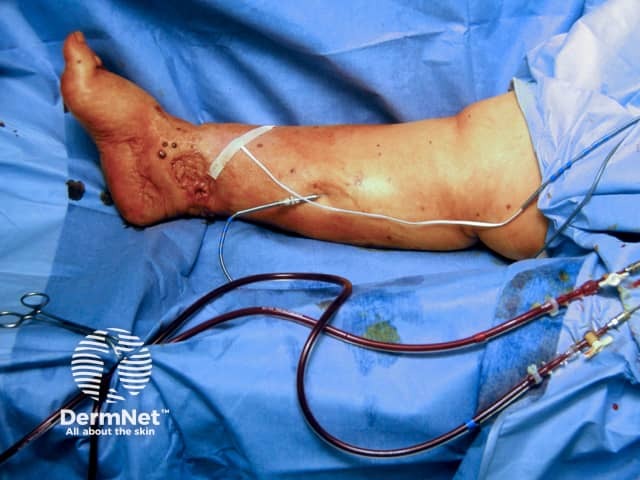Main menu
Common skin conditions

NEWS
Join DermNet PRO
Read more
Quick links
Treatments Lesions (cancerous)
Author: Brian Wu PhD. MD Candidate, Keck School of Medicine, Los Angeles, USA; Chief Editor: Dr Amanda Oakley, Dermatologist, Hamilton, New Zealand, August 2015.
Introduction indications Limb appearance following perfusion Efficacy Benefits and drawbacks
Isolated limb perfusion is a treatment method usually used in advanced cases of melanoma. It is also sometimes used for sarcoma and other cancers. It was developed in the 1950s as an alternative to amputation, which was often the standard of care when cutaneous melanoma metastases (secondaries) arose in one limb. Isolated limb perfusion with cytotoxic medications is intended to get rid of the metastases.
In this procedure:

Isolated limb perfusion
Patients should be carefully selected for isolated limb perfusion. Indications for isolated limb perfusion may include the following criteria:
Isolated limb perfusion can be a stand-alone therapy or can be used in combination with surgical resection or other treatments.
After this procedure, there can be distinct physical changes in the affected limb. These include:
Reports about isolated limb perfusion procedure for melanoma indicate:
Patients with poor prognosis receive the greatest benefit from this procedure.
The benefits of isolated limb perfusion for advanced localised melanoma include:
The drawbacks of isolated limb perfusion include:
New Zealand approved datasheets are the official source of information for these prescription medicines, including approved uses and risk information. Check the individual New Zealand datasheet on the Medsafe website.